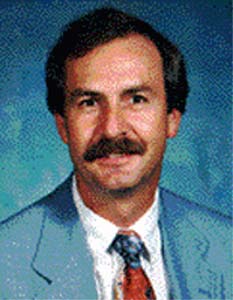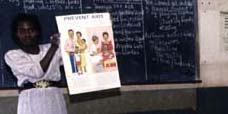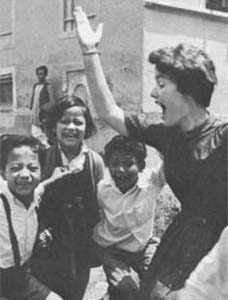
Philippines RPCV David Wiegand says: Opinion pages need improvement
Opinion pages need improvement
By David Wiegand
Published: Friday, November 15, 2002
Of all the deficiencies found in the most recent critiquing of member newspapers, opinion sections seemed to call for the most attention.
Many of the 85 newspaper staffs at this summer's workshop confronted the over-abundance of personal opinion writings. They focused on following the guidelines for solid editorial/opinion pages and the methods to create content with substance and style.
Misuse of individual writing
But some schools used nearly half of the printing space for individually composed opinion pieces. It was not uncommon to see 10 of these in a single edition and covering eight of 16 pages.
A newspaper is supposed to be a publication rooted in fact-based news, not a place to air everyone's pet views of the world. The number of individual compositions should be limited. Perhaps a pair of topical columns and a review or two (put reviews in the features section or into an arts section) are all that should be included in a 12 to 16 page tab publication.
Additionally, too many columns were not much more than diatribes by writers who had apparently little to say but took thousands of keystrokes to make it known. A quality column takes real work. Too many individuals write to impress their own egos without providing any content for the reader. Even if the prose is eloquently composed, if the writer has nothing to say, then don't waste the space in the paper.
Most columns are earned positions. Writing many other stories, often covering years on staff, proves that the writer merits a column. These criteria often mean that column positions are limited to the editor in chief and the opinion section editor. A good column will establish a tone and mood that are apparent after a few issues of the paper. The audience learns what to expect in style as well as general subject-matter each time the same writer has a piece published. Even if a reader disagrees with the author, he reads it just to spar mentally with the writer.
Staff editorials
Along with setting limits on personal columns, opinion sections have a dire need for different techniques to present editorial content. There are several possibilities.
Every issue should include at least one staff editorial. This editorial carries no byline. Rather, it represents the position of the whole paper (or at least its editorial staff) and should not be labeled as if it were one person's idea. It is surprising how many papers leave out this part. This omission is major; the staff editorial is often called the "soul" of the publication.
For each issue the editorial board should meet to discuss timely topics and to determine a position to be taken in the editorial. A single person then writes the editorial based upon the group's opinion. This editorial is placed in the most prominent location on the editorial page-usually in the upper left corner. A second and usually shorter editorial on a different topic might also be included.
Art and graphics
A well drawn editorial cartoon can make the opinion page attractive and effective. This art is often the entry point for the page and can make an effective comment. If no one on the newspaper staff has artistic talent, then it behooves the editors to seek out artists elsewhere. Go to the art department. Some art teachers will even make it an assignment for the whole class or give credit to the one who creates the cartoon.
Once an artist joins the production, other artwork can support the editorials in the same way that photos expand the presentation. (Yes, it is permissible to use photos on the editorial page.) Other graphic techniques such as graphs and charts can also lend support on these pages.
Letters to the editor
Letters to the editor are a fantastic way to provide a public forum for your school. Once established, the letters section often becomes a favorite stopping point for the audience.
Too many staffs believe they offer this service but complain that they seldom get any letters to print. They say they will print any letters dropped off in the newspaper office and then whine because no letters flood into the waiting box. This complaining is akin to a reporter sitting at his desk waiting for the phone to ring with the facts needed for a story. If a paper wants letters, the staff may have to get out and find them.
Make it easy for the readers to get the letters to the paper. Perhaps one of the English teachers or social studies teacher will even make it an assignment or give credit when a letter is published. Remind the readers often that the paper wants the letters. Morning announcements and posters can keep the concept out there. Perhaps one could challenge all members of the paper's staff to seek out and provide a letter for each issue from someone else in the school. Some papers make the letters to the editor section a standard assignment just like other stories are the responsibility of an individual reporter.
Photo polls
Just as the public likes to see themselves and their friends in the paper via letters, a question and answers element can be quite popular. A timely and serious question (Save the fluff photo polls for the features section) can present debate of important topics with a visual component by printing pictures of each person responding.
Brief points and comments
Many papers have a regular portion of the opinion section devoted to short points of commentary. Often titled "Heroes and Zeros," Hits and Misses," or "Pros and Cons," this section can inject numerous points of opinion in a small space. They can be as simple as commending the chess club for a state victory or as diverse as grieving the end of broadcasting Mr. Roger's Neighborhood. Readers enjoy these short comments which are easy to read but provide intriguing food for thought.
The editorial section can set the tone for the whole paper. Don't let it be boring in either content or appearance. Use these pages to provoke thought and even push people into action. If the pages look good (not all gray words), you will get your readers to stop and read them. Once you have their attention, give them content which is worth their time and effort.
David Wiegand advises The Warrior's Word at Wausau West High School in Wausau, Wisc., and teaches at CSPA's Summer Workshop.









